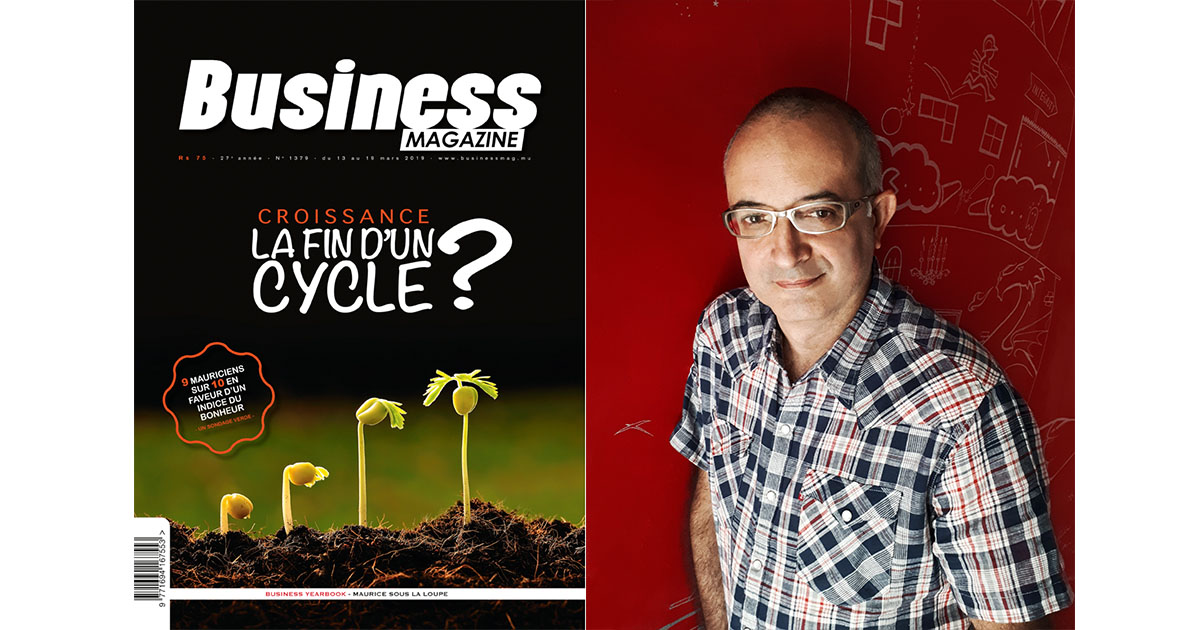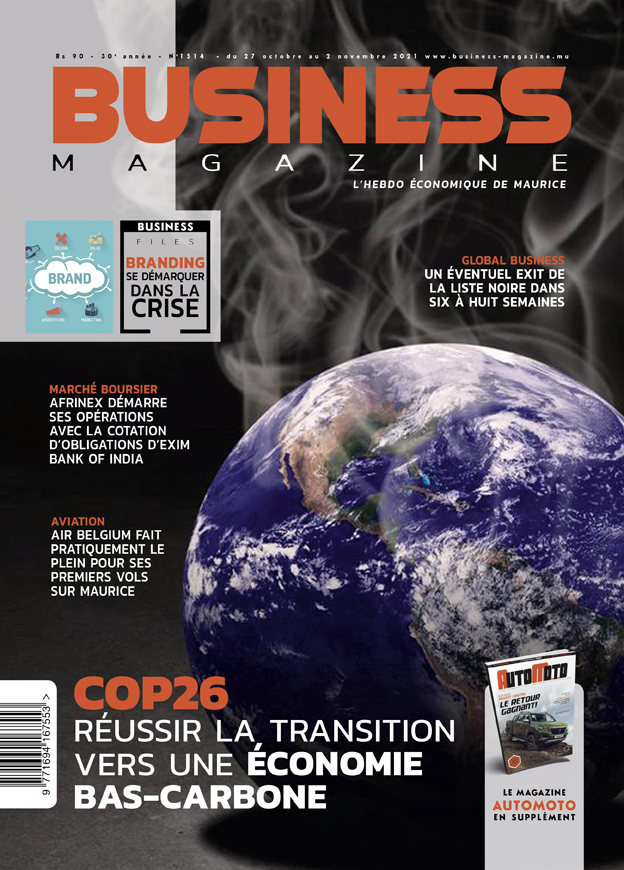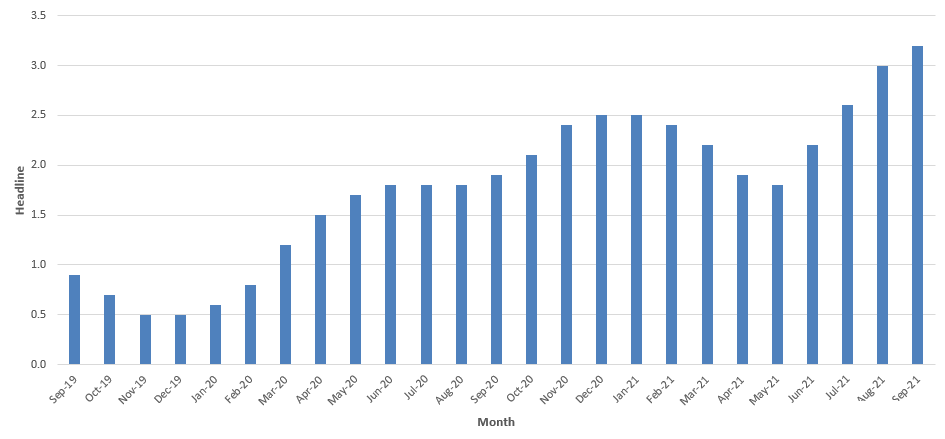The future of digital communication in Mauritius
Share

Today there are about 200 companies working in the sector of communication in Mauritius. The ACA (Association of Communication Agencies of Mauritius) comprises 18 of the largest, accounting for about 70% of the market, providing a full range of services, from ideation of complete campaigns right through to media planning and supervision of all production materials. Digital development and spend has played a significant role in the spend in Mauritius and globally, and this is a trend that will continue for the coming years. Globally, over the last two years, there were tremendous advancements in mobile web, the AI/VR movement, online video content.

Agencies in Mauritius, even though we might not have had the same level of development as seen overseas, experienced this first hand with a massive lean towards digital ad spend. And the future of the industry points to the fact that as we will progress, the sector will focus even more on the power of digital. The reason for this is that digital provides actionable data, direct access to target audiences and opportunities to put out messages to the right audience at the right time. Digital, integrated with traditional media, will see industry practices and trends shift as well. It is a promising future, as long as agencies not only evolve with trends, but manage to forecast these to be able to pre-empt.
MAKING BRANDS TRULY GLOCAL
},While communication agencies have a big role to play in this development, there are also tremendous opportunities which will keep growing for clients and their brands. Digital in Mauritius will be a fast and easy channel into the global market for local players, irrelevant of their size who are willing to take risks. RT Knits leads by example here. They have seized the opportunity to have an online shop – Teamonite – selling directly to consumers, rethinking the way the sector has operated traditionally, keeping tabs on their local resources, making it more sustainable in the long term, responding to the demand for speed and customisation. If we rethink our businesses creatively, we can all benefit from a larger target customer-base, increasing our numbers by going beyond the restrictions of our borders.
AFFORDABLE EPHEMERALITY
},Digital is “Always on, never off”. This means that the content on digital has a very short life span, where a day seems to be an eternity. Content creation for the digital platforms therefore has to be thought in terms of ‘fast food’; it needs to be as fast to create as it will be consumed by the audience, sometimes at the speed of a scroll. It must grab attention, speak to emotions, tell an interesting story while being very cost-effective to produce.
This is creating a whole new way of operating for communication agencies. While big TVC productions where working with local or international producers and production houses makes sense are still very much in the picture and part of the brands’ communication strategy, there is a growing need for agencies to be more agile, inventing new ways to produce fast turn-around content, and this is something which is being done in-house. The advertising sector has seized the opportunity to create new departments which can handle the type of production material that the digital platforms demand. As a result, clients are investing a lot more in shorter, quicker productions and as result of this, agencies are pushed to be more creative and versatile to maintain the audience’s attention and brand attraction.
GENERATION-Z MULTITASKERS
},Digital will cause exponential growth, as clients demand faster and more engaging content, and as agencies respond, there is space being created for a whole new generation of fast multitask learners. Our tertiary education institutions are barely following, as often what they are teaching is being outdated as they teach. The sector is demanding people who can learn on the spot, adapt and keep up with trends, keep up with rapidly evolving hardware and software. Today, everyone who has the desire and passion can become a broadcaster, producing, manipulating audio-visual material with minimum know-how because the integrated software is increasingly powerful and the prices increasingly low. To be able to compete in this environment, brands and their agencies have to keep going above and beyond what everybody else can do, and jobs such as Community Managers, Social-Media Coordinators will continue to morph to be able to anticipate trends, while being fully immersed in consumer lifestyles, adapting themselves almost on a daily basis to grab hold of opportunities.

This will also demand a high degree of strategic sophistication strategically – we are a long way from the basic pretty picture and status online. To be effective today, one has to be able to constantly analyse this fast-paced environment to correct and improve to stay ahead of all the online ‘noise’, a profession on its own, which is maturing quickly.
The belief that digital is the do-it-all solution is erroneous. Digital is part of a bigger universe and needs to be integrated in an overall communication strategy. Relying on the digital alone to build and develop brands is one of the challenges our industry is going to face for the coming years.
CHALLENGE 1:
Short Term Strategies, where clients tend to weather the storm by cutting costs instead of building brands. For agencies this is frustrating, if understandable, that our clients remain risk averse and focused on cost. And we have to find ways to work around this.
CHALLENGE 2:
Understanding Audiences, where we will need to favour behavioural insights over demographic stereotypes. Brands have to learn how to deal with a ‘smarter consumer’, a person who is more selective, and is seeking convenience, who expects personal experiences in return for his personal data. Agencies and brands will need to identify how to give them what they want.
CHALLENGE 3:
The Era of Mobile, where we have to learn to innovate on a platform that’s evolving at 100 mph. The challenge is nothing new but increasingly more important.
CHALLENGE 4:
The Chaos of Complexity, where we have to understand and adapt platforms for new, creative purposes. This means greater accountability, disrupting our business, different creative patterns, new ways of working. The companies that will be successful in this age are the ones that are willing to constantly reinvent themselves.
CHALLENGE 5:
Reinventing Our Ways of Working, where we have to figure out how to adapt and identify new areas for growth. Look for ways of using our company’s underlying assets, doing things better, understanding our clients’ real needs and responding to it accordingly.
CHALLENGE 6:
Motivating Employees, where we need to better understand the emotional needs of staff and create an environment where they will deliver their best.
CHALLENGE 7:
Keeping Up With the Rest of World. Super apps such as WeChat are being embraced by consumers, especially in Asia, in countries like China – world leader in mobile Internet subscriptions with more than 1.1 billion users. Super apps combine all aspects of a consumer’s world into a single mobile platform, offering a cohesive experience. Data is becoming the new currency, enabling companies to build one-on-one relationships via tailored experiences and recommendations. Mobile wallets will go increasingly global, outlets will need to get tech injection as physical outlets remain a critical part of the consumer shopper journey and they will have to use various technologies to re-imagine the experience.
A challenging but exciting future!
}]








